The CEO is still the same as then, Lee Yong-bae, and there has been no significant change in business. The company is still producing trains such as KTX, and K2 tanks. But if you ask what the difference is,
The difference is the return for shareholders who invested in this company. Hyundai Rototem is the same company as it was two years ago, but this year, it delivered a 47 percentage point higher return to shareholders. In 2022, Hyundai Rotem achieved a return of 37% centered on electric trains, and in 2024, it achieved a return of 84% with the K2 tank.
The Korea Financial News used the corporate data platform DeepSearch to calculate Hyundai Rotem's cumulative total shareholder return rate (TSR) for 2022 and from January 1 to December 27, 2024. According to this, the cumulative TSR in 2022 was 36.54%, and in 2024, it was 83.65%.
This means that when A, who invested KRW 10 million in Hyundai Rotem in 2022, and B, who invested the same amount this year, calculated the money they received at the end of the year, A had about KRW 13.65 million, and B had about KRW 18.36 million. Both A and B made a profit, but B's return was about 47 percentage points higher.
TSR is an indicator of shareholder return, which is the sum of the stock price change and dividend yield over a period of time divided by the market capitalization. From a shareholder's perspective, it shows how much you can earn by investing in a company's stock over a period of time, and from a company's perspective, it shows how much of its net income is spent on dividends and share buybacks.
The reason why 2022 and 2024 were calculated separately is because the rankings of Rail Solutions and Defense Solutions among Hyundai Rotem's major sales proportions were changed in those years.
Looking at sales in 2022, Rail Solutions accounted for 56% and Defense Solutions accounted for 34%, but in 2023, Defense Solutions accounted for 44% and Rail Solutions accounted for 43%, making the two divisions similar. Then, in the third quarter of 2024, Defense Solutions recorded 50% and Rail Solutions 37%, with Defense Solutions surpassing Rail Solutions.
Hyundai Rotem's sales are largely divided into three categories. There are the Rail Solutions division, which produces electric trains and passenger cars, the Defense Solutions division, which manufactures K-series tanks and armored vehicles and conducts maintenance work, and the Plant (Eco Plant) Division, which manufactures automobile production facilities and steel facilities. Rail Solutions and Defense Solutions account for 80% of sales, and Eco Plant accounts for 10%.
90 percent of the cumulative TSR was driven by the stock price. The cumulative stock price increase rate in 2022 is 36.54%, and in 2024, it is 83.27%. In particular, since there is no dividend in 2022, the stock price increase rate becomes TSR as it is. On the first opening day of 2022, January 3, Hyundai Rotem's stock price started at KRW 21,250 and closed at KRW 28,400 on December 29. On the other hand, on the opening day of this year, January 2, it was KRW 26,750, and on the 27th, it closed at KRW 48,750.
The most notable development over the past two years has been the advancement of the defense sector. In July 2022, Hyundai Rotem signed a contract with the Polish Armaments Agency to export 1,000 K2 tanks, and the following month signed a first execution contract for 180 tanks worth US$ 3.4 billion (approximately KRW 4.4992 trillion at the time). Hyundai Rotem has delivered a total of 84 tanks so far, and plans to deliver the remaining 96 tanks next year.
That doesn't mean the railroad business didn't go well. The rail solution sector is also winning new orders. In terms of order backlog alone, rail solutions are overwhelmingly larger than defense solutions. As of the end of September this year, the rail solution order backlog was KRW 13.7 trillion, while defense solutions recorded KRW 4.48 trillion.
Hyundai Rotem won a contract for the GTX-C Line worth KRW 542.6 billion this year, following the GTX-A Line electric train project in 2020. In August last year, it was awarded the contract to operate, maintain, and repair the New Ansan Line double-track electric railway, which is scheduled to open in April next year. The project size is KRW 2.1281 trillion, and the contract period is 40 years.
Export performance is also good. Last year, it won a contract for the supply of QTMP electric trains in Australia worth KRW 1.2164 trillion, and in February this year, it won a contract for the Los Angeles Metro electric train project worth about KRW 868.8 billion. In June, it signed a contract to supply double-decker passenger cars in Boston, USA, and trams in Egypt. The contract amounts are KRW 241.4 billion and KRW 341.1 billion, respectively.
Dividends accounted for 10% of the cumulative TSR gap in 2022 and 2024. Previously, Hyundai Rotem temporarily suspended dividends as its performance deteriorated after the 2013 dividend settlement.
At that time, in order to expand its appearance and secure references, it expanded orders for EPC projects that provide design, procurement, and construction in one stop, which had little business experience, and increased business risk.
Here, the deficit trend continued for a long time due to process delays and increased costs. In particular, the financial structure worsened further in 2018 due to the large-scale loss from the Qatar sewage treatment project. In 2017, operating profit was KRW 45.4 billion, but it turned into an operating loss of KRW 196.2 billion in just one year.
Profitability improved as the proportion of low-profit project performance gradually decreased and the defense sector gradually expanded from 2020. In 2022, it secured KRW 76.4 billion in distributable profits. However, it did not pay dividends at the time in order to invest in new businesses. Then, in 2023, it paid out KRW 100 per share in a final dividend payment for the first time in 10 years.
Hyundai Rotem's operating profit is on the rise. It recorded KRW 210 billion in 2023, up 42% year-on-year from KRW 147.5 billion in 2022. According to the FnGuide consensus (average of performance forecasts), this year's sales are expected to reach KRW 445.3 billion, up 112% from the previous year.
Shin Haeju (hjs0509@fntimes.com)





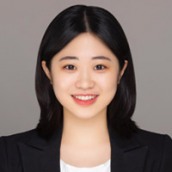





!['The CEO and the business haven't changed, but...' Hyundai Rotem's Transforms in 2 Years [The answer is TSR]](https://cfnimage.commutil.kr/phpwas/restmb_allidxmake.php?pp=002&idx=3&simg=2024123011564108423141825007d12411124362.jpg&nmt=18)
!['The CEO and the business haven't changed, but...' Hyundai Rotem's Transforms in 2 Years [The answer is TSR]](https://cfnimage.commutil.kr/phpwas/restmb_allidxmake.php?pp=002&idx=999&simg=2024123011564108423141825007d12411124362.jpg&nmt=18)





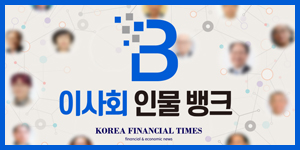












![할아버지 정주영이 짓고, 손자 정의선 애정이 담긴 국내 最古 경영학부 [오너가 나온 그 대학]](https://cfnimage.commutil.kr/phpwas/restmb_setimgmake.php?pp=006&w=69&h=45&m=5&simg=2025030323512906011dd55077bc25812315232.jpg&nmt=18)

![이환주號 국민은행, 순익 163.5% 늘었지만···대외 변동성에 수익성·건전성↓ [금융사 2025 1분기 실적]](https://cfnimage.commutil.kr/phpwas/restmb_setimgmake.php?pp=006&w=69&h=45&m=5&simg=2025042421110200774b4a7c6999c145616778.jpg&nmt=18)

![도봉 '창동주공3단지' 24평, 2.9억 내린 6.1억원에 거래 [이 주의 하락아파트]](https://cfnimage.commutil.kr/phpwas/restmb_setimgmake.php?pp=006&w=69&h=45&m=5&simg=2022111808264906239dd55077bc2175114235199.jpg&nmt=18)
![임종룡號 우리금융, 비용 증가에 순이익 11%↓···비은행·건전성 관리도 '미흡' [금융사 2025 1분기 실적]](https://cfnimage.commutil.kr/phpwas/restmb_setimgmake.php?pp=006&w=69&h=45&m=5&simg=2025022818101104975b4a7c6999c121131189150.jpg&nmt=18)

![[4월 5주 청약일정] 잇따른 ‘분양가 상한제’ 단지 공급…전국 12곳 4162가구 접수](https://cfnimage.commutil.kr/phpwas/restmb_setimgmake.php?pp=006&w=69&h=45&m=5&simg=2025042518030800663e41d7fc6c2183101242202.jpg&nmt=18)






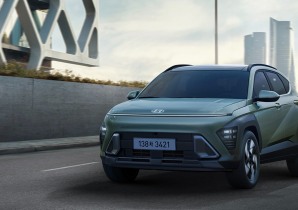





![[카드뉴스] KT&G ‘Global Jr. Committee’, 조직문화 혁신 방안 제언](https://cfnimage.commutil.kr/phpwas/restmb_setimgmake.php?pp=006&w=298&h=298&m=1&simg=202503261121571288de68fcbb3512411124362_0.png&nmt=18)
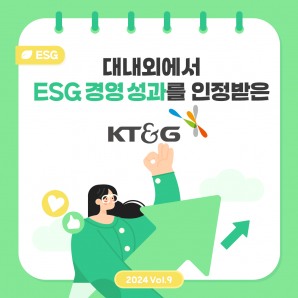
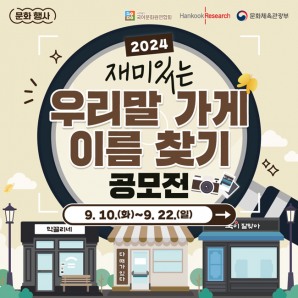
![[카드뉴스] 국립생태원과 함께 환경보호 활동 강화하는 KT&G](https://cfnimage.commutil.kr/phpwas/restmb_setimgmake.php?pp=006&w=298&h=298&m=1&simg=202403221529138957c1c16452b0175114235199_0.png&nmt=18)
![[카드뉴스] 신생아 특례 대출 조건, 한도, 금리, 신청방법 등 총정리...연 1%대, 최대 5억](https://cfnimage.commutil.kr/phpwas/restmb_setimgmake.php?pp=006&w=298&h=298&m=1&simg=20240131105228940de68fcbb35175114235199_0.jpg&nmt=18)
![[신간] 리빌딩 코리아 - 피크 코리아 극복을 위한 생산성 주도 성장 전략](https://cfnimage.commutil.kr/phpwas/restmb_setimgmake.php?pp=006&w=81&h=123&m=5&simg=2025032814555807705f8caa4a5ce12411124362.jpg&nmt=18)
![[신간] 지속 가능 경영, 보고와 검증](https://cfnimage.commutil.kr/phpwas/restmb_setimgmake.php?pp=006&w=81&h=123&m=5&simg=2025011710043006774f8caa4a5ce12411124362.jpg&nmt=18)
![[서평] 추세 매매의 대가들...추세추종 투자전략의 대가 14인 인터뷰](https://cfnimage.commutil.kr/phpwas/restmb_setimgmake.php?pp=006&w=81&h=123&m=5&simg=2023102410444004986c1c16452b0175114235199.jpg&nmt=18)

![[신간] 똑똑한 금융생활...건전한 투자와 건강한 재무설계 지침서](https://cfnimage.commutil.kr/phpwas/restmb_setimgmake.php?pp=006&w=81&h=123&m=5&simg=2025031015443705043c1c16452b012411124362.jpg&nmt=18)

![[카드뉴스] KT&G ‘Global Jr. Committee’, 조직문화 혁신 방안 제언](https://cfnimage.commutil.kr/phpwas/restmb_setimgmake.php?pp=006&w=89&h=45&m=1&simg=202503261121571288de68fcbb3512411124362_0.png&nmt=18)
![[AD] 기아, 혁신적 콤팩트 SUV ‘시로스’ 세계 최초 공개](https://cfnimage.commutil.kr/phpwas/restmb_setimgmake.php?pp=006&w=89&h=45&m=1&simg=2024123113461807771f9c516e42f12411124362.jpg&nmt=18)
![[AD] 아이오닉5 '최고 고도차 주행 전기차' 기네스북 올랐다...압도적 전기차 입증](https://cfnimage.commutil.kr/phpwas/restmb_setimgmake.php?pp=006&w=89&h=45&m=1&simg=2024123113204707739f9c516e42f12411124362.jpg&nmt=18)




